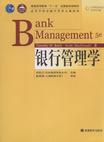银行管理学
2005-1
高等教育出版社
[美] 科克(Koch、T.W.)、(美)麦克唐纳
374
690000
无
自教育部在《关于加强高等学校本科教学工作提高教学质量的若干意见》【教高(2001)4号】中提出双语教学的要求后,各地高校相继开设了一系列双语教学课程。这对提高学生的学科和外文水平,开阔国际视野,培养创新型人才起到了重要的作用;一大批教师也逐渐熟悉了外文授课,自身的教学水平和能力得到较大提高,具备国际学术思维的中青年教师脱颖而出。同时,经过近几年的双语教学实践,国外原版教材量大、逻辑不够清晰、疏离中国现实等问题也影响了双语教学的效果。因此,对外版教材进行本土化的精简改编,使之更加适合我国的双语教学已提上教材建设日程。 为了满足高等学校经济管理类双语课程本土化教学的需要,在教育部高等教育司的指导和支持下,高等教育出版社同Thomson Leaming等国外著名出版公司通力合作,在国内首次推出了金融、会计、经济学等专业的英文原版改编教材。本套教材的遴选、改编和出版严格遵循了以下几个原则: 1.择优选取权威的新版本。在各专业选书论证会上,我们要求入选改编的教材不仅是在国际上多次再版的经典之作的最新版本,而且是近年来已在国内被试用的优秀教材。 2.改编后的教材力求内容规范简明,逻辑更加清晰,语言原汁原味,适合中国的双语教学。选择的改编人既熟悉原版教材内容又具有本书或本门课程双语教学的经验;在改编过程中,高等教育出版社组织了知名专家学者召开了数次改编和审稿会议,改编稿征求了众多教师的意见。 3.改编后的教材配有较丰富的辅助教学支持资源,教师可在网上免费获取。同时,改编后的教材厚度适中,定价标准较低。 由于原作者所处国家的政治、经济和文化背景等与我国不同,对书中所持观点,敬请广大读者在阅读过程中注意加以分析和鉴别。 此次英文改编教材的出版,得到了很多专家学者的支持和帮助,在此深表谢意!我们期待这批英文改编教材的出版能对我国经济管理类专业的教学能有所帮助,欢迎广大读者给我们提出宝贵的意见和建议。
在最近几十年中,商业银行的经营环境、组织制度、业务范围、经营方式、管理技术、监管规则等各个方面都发生了极其巨大的变化。本书详细分析了在这种背景下现代商业银行的最新经营管理理念和实践,概括了国际银行业的现状和发展趋势,具体內容包括经营环境分析、银行绩效评价、利率风险管理、负债管理、资本管理、现金资产管理、贷款管理和投资管理等內容。 本书除可作为本科高年级、研究生低年级银行管理课程教材使用外,还可供银行培训教材使用,并可供经济、金融理论工作者和实际工作者阅读参考。
迪莫斯·柯奇(了imothy w Koch),南卡罗莱纳大学金融学教授、卡罗莱纳银行家协会银行系主任,曾执教于贝罗大学和德克萨斯技术大学,并曾担任德克萨斯技术大学银行系主任。
1 FUNDAMENTAL FORCES OF CHANGE IN BANKING The Fundamental Forces of Change Increased Competition Competition for Deposits Competition for Loans Competition for Payment Services Competition for Other Bank Services Deregulation and Reregulation Financial Innovation Globalization Capital Requirements Increased Consolidation Summary2 ANALYZING BANK PERFORMANCE Commercial Bank Financial Statements The Balance Sheet The Income Statement The Relationship between the Balance Sheet and Lncome Statement The Return on Equity Model The Uniform Bank Performance Report Profitability Analysis Expense Ratio and Asset Utilization Banking Risks and Returns: The Profitabiiify, Liquidity, and Solvency Trade-Off Credit Risk Liquidity Risk Market Risk Operating Risk Legal Reputation Risk Capital or Solvency Risk Maximizing the Market Value of Bank Equity Evaluating Bank Performance: An Application PNC's Profitability and Risk versus Peers in 2001 PNC's Profitability versus Risk: 1993-2001 CAMELS Ratings Performance Characteristics of Different-sized Banks Financial Statement Manipulation Preferred Stock Nonperforming Loans Securities Gains and Losses Nonrecurring Sales of Assets Summary3 MANAGING NONINTEREST INCOME AND NONINTEREST EXPENSE Common Financial Ratios of Expense Control and Noninterest Income Growth Noninterest Income Noninterest Expense Key Ratios Operating Risk Ratio Customer Profitability and Business Mix Which Customers Are Profitable? What Is the Appropriate Business Mix? Strategies to Manage Noninterest Expense Cost Management Strategies Summary4 MANAGING INTEREST RATE RISK: GAP AND EARNINGS SENSITIVITY Measuring Interest Rate Risk with GAP Traditional Static GAP Analysis What Determines Rate Sensitivity? Factors Affecting Net Interest Income Changes in the Level of Interest Rates Changes in the Relationship between Sh0rt-Term Asset Yields and Liability Costs Changes in Volume Changes in Portfolio Composition Rate, Volume, and Mix Analysis Rate-Sensitivity Reports Strengths and Weaknesses: Static GAP Analysis Link between GAP and Net Interest Margin Earnings Sensitivity Analysis Exercise of Embedded Options in Assets and Liabilities Different Interest Rates Change by Different Amounts at……
Capital risk is not considered a separate risk because all of the risks mentioned previouslywill, in one form or another, affect a banks capital and hence solvency. It does, however, rep-resent the risk that a bank may become insolvent and fail. A firm is technically insolventwhen it has negative net worth or stockholders equity. The economic net worth of a firm isthe difference between the market value of its assets and liabilities. Thus, capital risk refersto the potential decrease in the market value of assets below the market value of liabilities,indicating economic net worth is zero or less. If such a bank were to liquidate its assets, itwould not be able to pay all creditors, and would be bankrupt. A bank with equity capitalequal to 10 percent of assets can withstand a greater percentage decline in asset value than abank with capital equal to only 6 percent of assets. One indicator of capital risk is a compar-ison of stockholders equity with the banks assets. The greater equity is to assets, the greateris the amount of assets that can default without the bank becoming insolvent. Chapter7introduces more formal risk-based capital ratios that indicate solvency risk. A bank that assumes too much risk can become insolvent and fail. Operationally, a failedbanks cash inflows from debt service payments, new borrowings, and asset sales are insuf-ficient to meet mandatory cash outflows due to operating expenses, deposit withdrawals,and maturing debt obligations. A cash flow deficiency is caused by the markets evaluationthat the market value of bank equity is falling and potentially negative. High credit risk typ-ically manifests itself through significant loan charge-offs. High interest rate risk manifestsitself through mismatched maturities and durations between assets and liabilities. Highoperational risk appears with costs being out of control. Banks operating with high risk areexpected to have greater capital than banks with low risk. When creditors and shareholdersperceive that a bank has high risk, they demand a premium on bank debt and bid shareprices lower. This creates liquidity problems by increasing the cost of borrowing and poten-tially creating a run on the bank. Banks ultimately fail because they cannot independentlygenerate cash to meet deposit withdrawals and operate with insufficient capital to absorblosses if they were forced to liquidate assets. As such, the market value of liabilities exceedsthe market value of assets. Capital risk is closely tied to financial leverage, asset quality, and a banks overall risk pro-file; the more risk that is taken, the greater is the amount of capital required. High amountsof fixed-rate sources of funds increase the expected volatility of a firms income because inter-est payments are mandatory. If a bank was funded entirely from common equity, it wouldpay dividends, but these payments are discretionary. Omitting dividends does not producedefault. Firms with high capital risk evidenced by low capital-to-asset ratios exhibit highlevels of financial leverage, have a higher cost of capital and normally experience greaterperiodic fluctuations in earnings.

无
所说的送教师教学资源还需要自己把表邮过去,不是很靠谱!